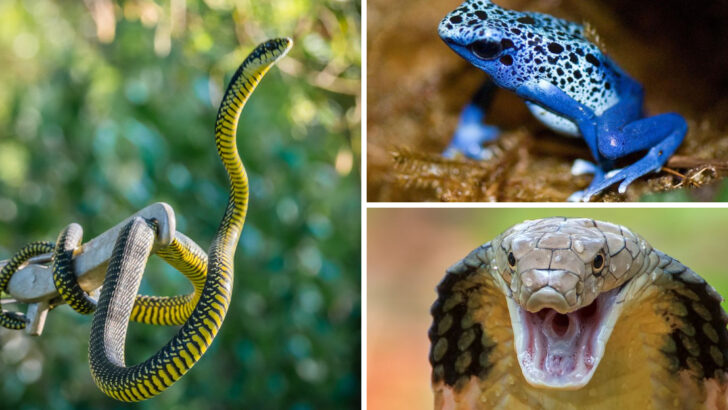You’ve been warned. Beauty in the animal kingdom doesn’t always come with a cuddly side.
Some of the most stunning creatures on Earth are also the most dangerous. Their vivid colors, unique features, and graceful movements might make you want to get closer, but don’t be fooled. These animals carry poisons and venoms so potent, they can kill with a single bite or sting.
In the wild, beauty can be a lethal weapon. It’s nature’s cruel irony—what attracts us also has the power to destroy. From the depths of the ocean to dense rainforests, these creatures are reminders that danger often wears the most captivating masks.
Ready to meet these deadly beauties? Let’s dive in. But remember, admire from a safe distance.
Blue-Ringed Octopus
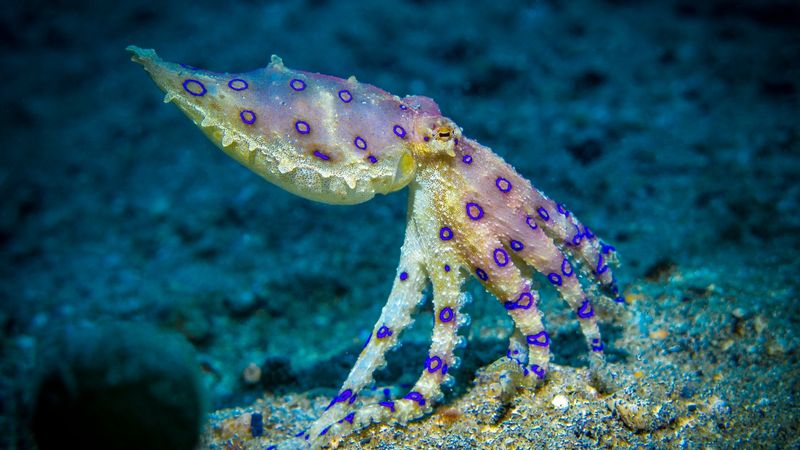
The Blue-Ringed Octopus, small yet mesmerizing, dwells in the shallow waters of the Pacific and Indian Oceans. Its vivid blue rings are a stark warning of its potent venom, which contains tetrodotoxin, a substance powerful enough to paralyze and kill humans. Despite its size, this octopus is one of the ocean’s most dangerous creatures.
Swimmers are advised to admire from a distance, as the octopus bites swiftly when threatened. Its beauty often lures unsuspecting divers, unaware of the lethal threat it embodies. Admire its beauty with caution and respect its space.
Poison Dart Frog
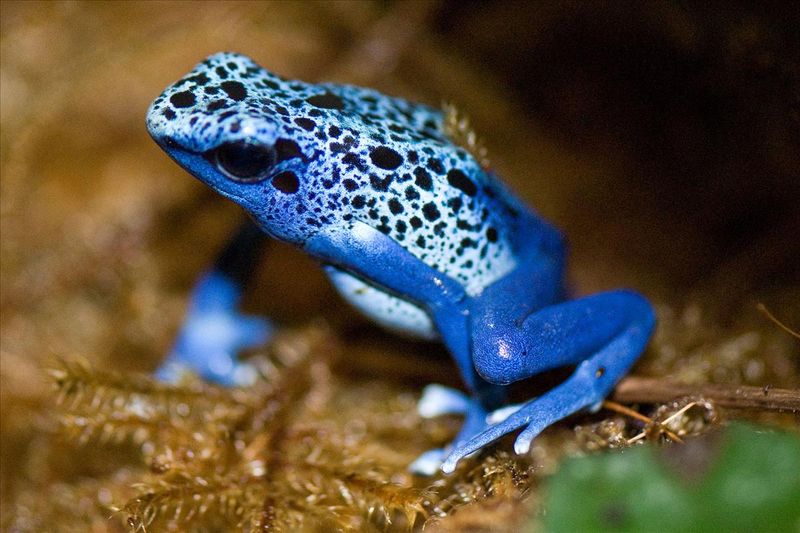
The Poison Dart Frog, native to Central and South American rainforests, astounds with its dazzling array of colors. These brilliant hues serve as a warning to predators of their toxic skin, which indigenous people historically used for hunting by coating their blow darts.
Despite their beauty, these frogs harbor enough poison to cause serious harm. Their toxicity varies among species, with some considered lethal to humans. While their danger is real, they play a vital role in their ecosystem. Conservation efforts are essential to protect these vibrant yet deadly amphibians.
Box Jellyfish
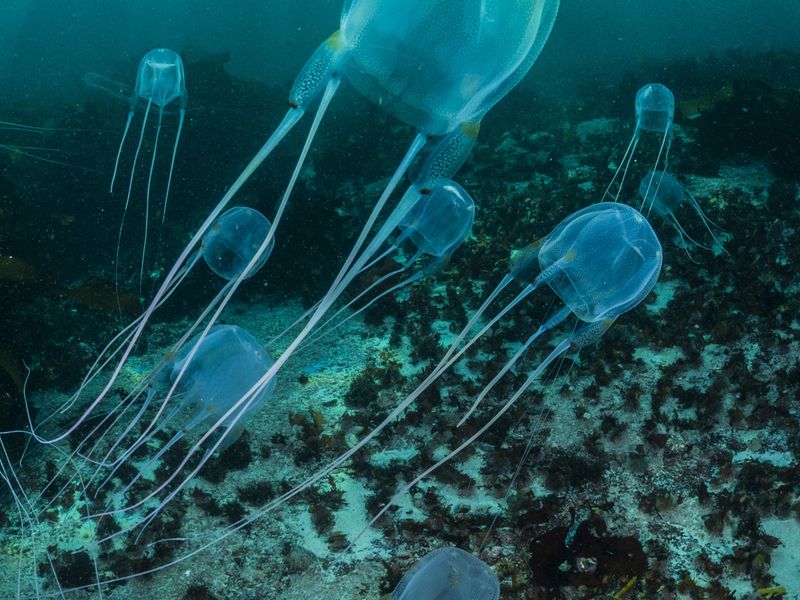
The Box Jellyfish, often found in the waters of the Indo-Pacific region, is a beautiful yet perilous marine creature. Its transparent body and dangling tentacles conceal a venomous sting that can cause heart failure or death within minutes.
Swimmers should heed warnings and avoid areas where sightings are frequent. The jellyfish’s allure lies in its ghostly gracefulness, but its tentacles are equipped with potent venom. Encountering one requires immediate medical attention. They remind us of the ocean’s unpredictable beauty and the respect it commands.
King Cobra
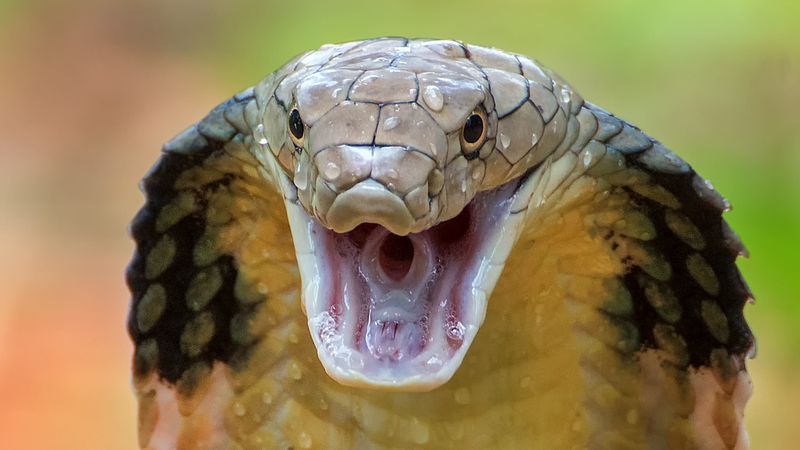
The King Cobra, residing in Southeast Asian forests, is the longest venomous snake, reaching lengths of up to 18 feet. Its elegant movement and imposing presence are matched by its deadly venom, capable of killing an elephant.
This snake’s striking appearance is both fascinating and intimidating. Its bite delivers neurotoxins that paralyze and can be fatal to humans without swift treatment. Observing the King Cobra is best done from a safe distance, respecting its territory and understanding its crucial role in controlling prey populations in the wild.
Cone Snail
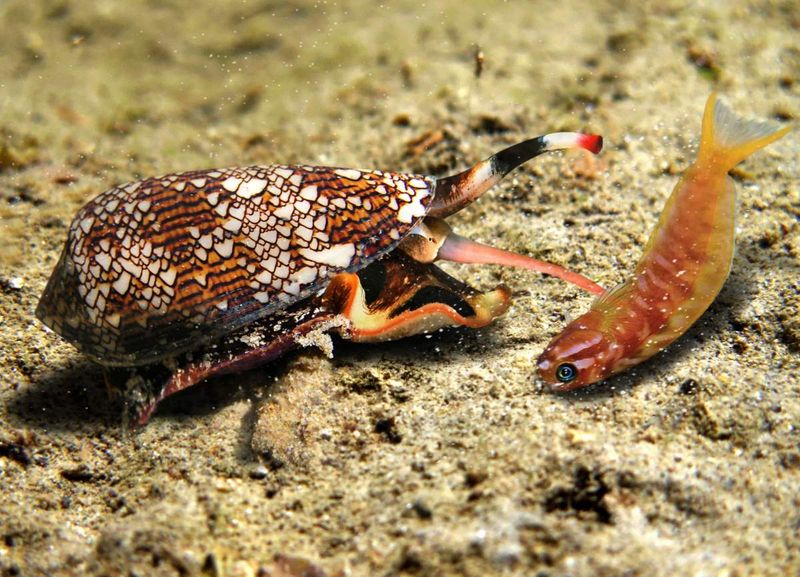
The Cone Snail, with its beautifully patterned shell, inhabits warm tropical waters. Despite its slow nature, it is highly venomous, using a harpoon-like tooth to deliver a toxin capable of paralyzing prey instantly.
Its shell’s allure makes it a tempting but dangerous find for shell collectors. Encounters can be deadly, as its venom, known as conotoxin, has no known antidote. This snail’s dual nature as both a wonder and a threat emphasizes the need for caution when exploring coral reefs. Appreciating its beauty requires a respectful distance.
Stonefish
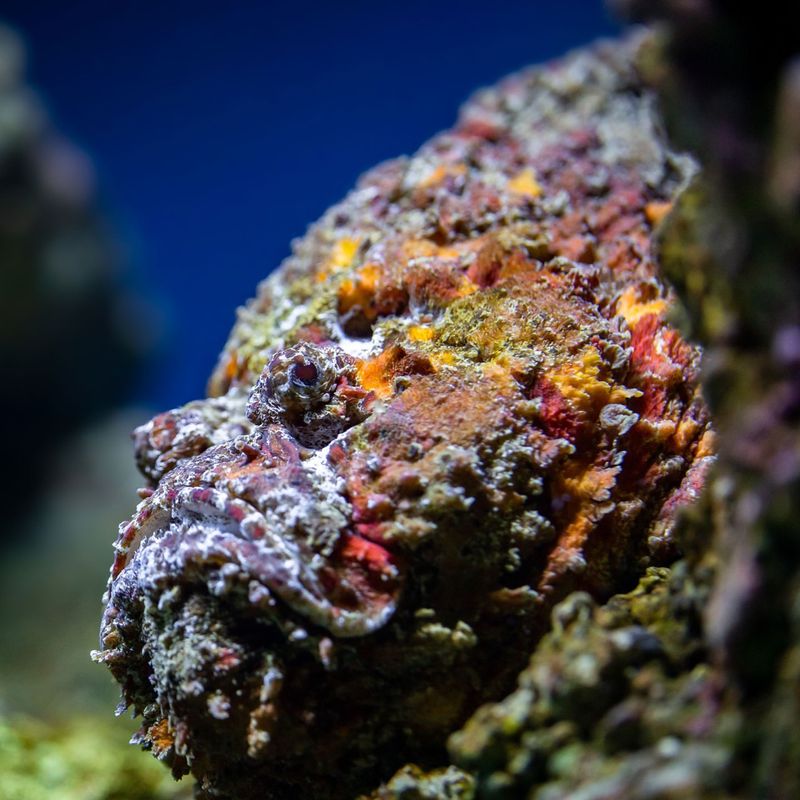
The Stonefish, master of disguise, is the world’s most venomous fish, often found along the ocean floor in Indo-Pacific waters. Its mottled appearance camouflages it perfectly, making it easy for unsuspecting swimmers to step on.
Equipped with venomous dorsal spines, a sting can cause excruciating pain and even be fatal. Its ability to blend into the environment underscores the importance of vigilance in marine habitats. The Stonefish is a reminder of the hidden dangers beneath the ocean’s surface, where beauty and peril coexist in the most unexpected forms.
Brazilian Wandering Spider
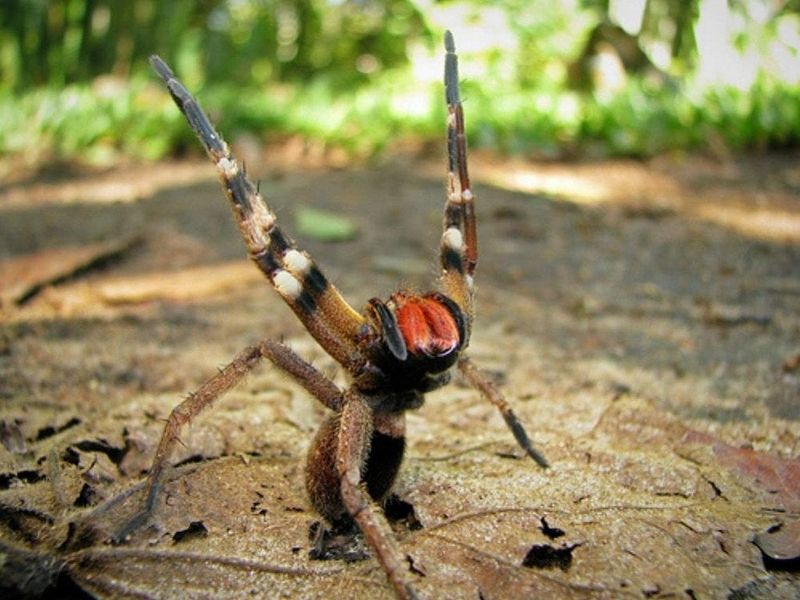
The Brazilian Wandering Spider, found in the Amazon rainforest, is one of the most venomous spiders globally, earning it an infamous reputation. Its name reflects its tendency to roam the forest floor rather than constructing webs.
Its venom can cause intense pain, and in severe cases, paralysis. Despite its fearsome status, it plays a significant role in controlling insect populations. When exploring rainforests, it’s wise to check shoes and belongings for these spiders. Understanding their ecological role and behavior aids in coexisting safely with them.
Pufferfish
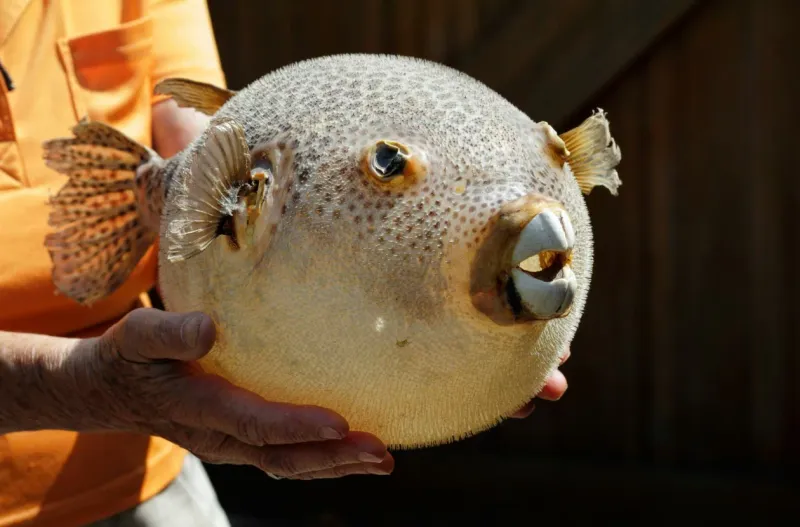
The Pufferfish, known for its ability to inflate, inhabits tropical and subtropical ocean waters. While its appearance is charming, it harbors tetrodotoxin, a toxin with no known antidote, making it more lethal than cyanide.
Often considered a delicacy in some cultures, it requires careful preparation to avoid poisoning. Its unique defense mechanism and vibrant appearance attract admirers, though caution is advised. This remarkable fish exemplifies how nature’s most intriguing designs often come with hidden dangers, necessitating a respectful approach to both its beauty and potential threat.
Deathstalker Scorpion
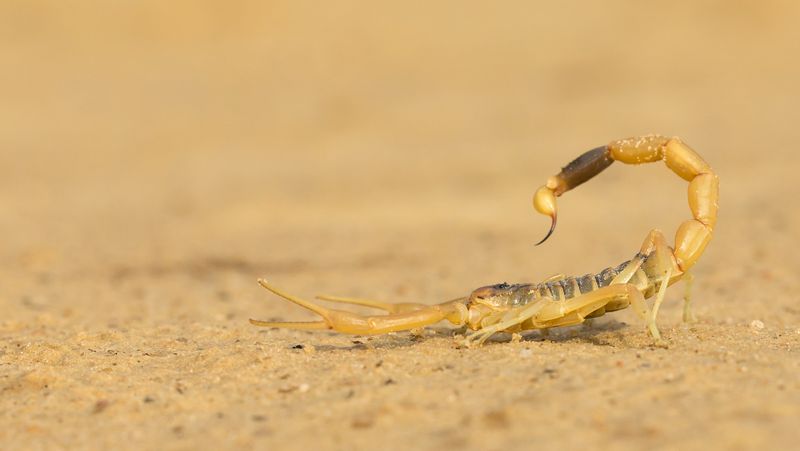
The Deathstalker Scorpion, residing in the deserts of North Africa and the Middle East, is renowned for its potent venom. Its yellow body blends with the sand, and its sting can cause severe pain and medical complications.
Despite its fearsome reputation, most stings are not fatal with prompt treatment. This scorpion’s adaptability to harsh environments is a testament to nature’s ingenuity. Travelers in desert regions should be cautious, wearing appropriate footwear and staying alert. The Deathstalker embodies the captivating yet dangerous aspects of desert wildlife.
Sydney Funnel-Web Spider
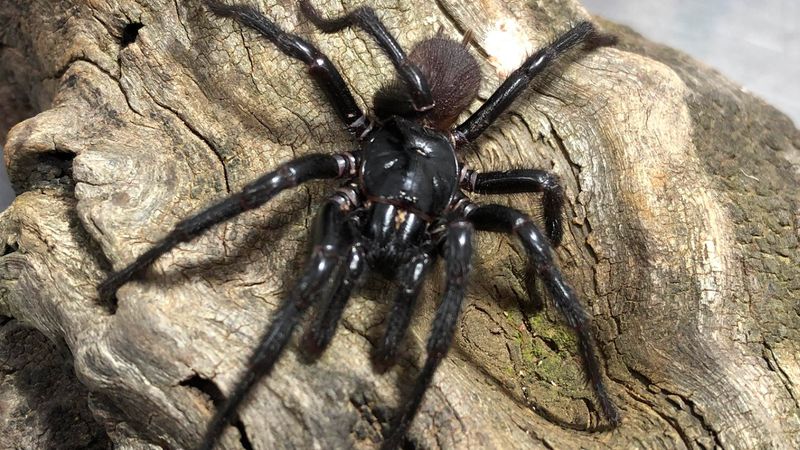
The Sydney Funnel-Web Spider, native to Eastern Australia, is infamous for its aggressive nature and potent venom. Its glossy black body and large fangs make it a formidable predator.
An encounter with this spider can be dangerous, as its bite can cause severe symptoms. However, effective antivenoms have reduced fatalities. Understanding its behavior and habitat helps in avoiding unwanted encounters. This spider’s menacing beauty is a reminder of Australia’s unique and sometimes hazardous wildlife, where vigilance and respect are key to appreciating its diverse ecosystems.
Boomslang
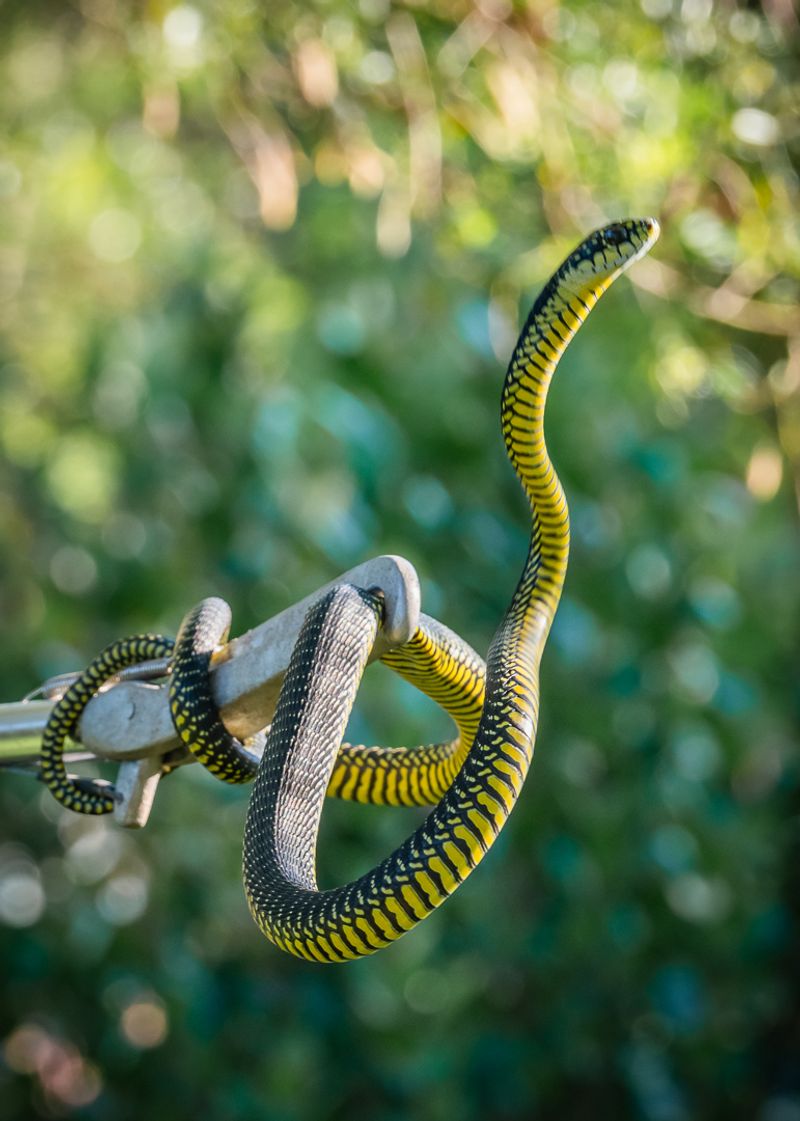
The Boomslang, an arboreal snake found in sub-Saharan Africa, is known for its striking coloration and reclusive nature. Its venom, delivered through rear fangs, disrupts blood clotting and can be fatal without prompt medical intervention.
Despite its potential danger, the Boomslang is shy and avoids human encounters. Observers are captivated by its bright scales, which offer camouflage among tree leaves. Understanding its behavior and respecting its habitat are essential for appreciating its beauty safely. The Boomslang exemplifies the delicate balance between allure and danger in the wild.
Gila Monster
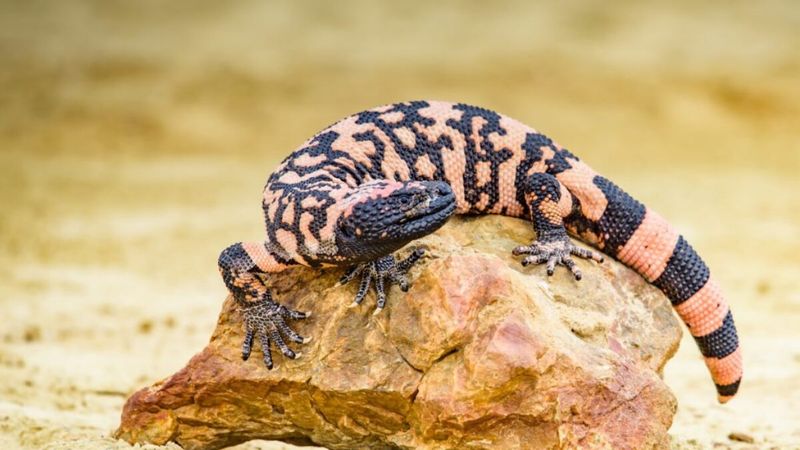
The Gila Monster, native to the southwestern United States and Mexico, is one of the only venomous lizards. Its colorful skin serves as a warning of its venomous bite, which, while rarely fatal, causes intense pain.
Though slow-moving, it delivers a powerful bite when threatened. Observers often marvel at its striking appearance, which is both a lure and a warning. Admiring this reptile requires a respectful distance, acknowledging its role in the desert ecosystem. The Gila Monster reflects how nature’s vivid designs often come with protective mechanisms.
Tarantula Hawk Wasp
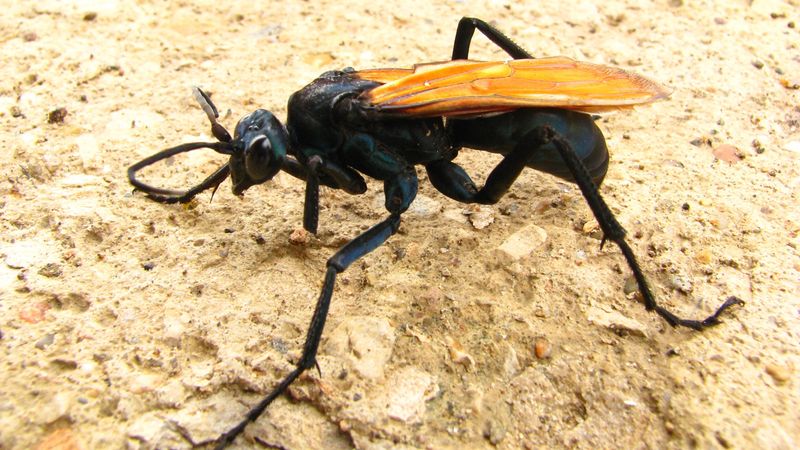
The Tarantula Hawk Wasp, inhabiting desert regions, is renowned for its vivid appearance and painful sting. Its shiny blue-black body and bright orange wings make it stand out among desert flora.
Despite its fearsome sting, which ranks among the most painful, it poses little danger to humans as it rarely stings unless provoked. Its role in controlling tarantula populations highlights its ecological importance. Admiring its beauty from afar is advisable, allowing for appreciation without risk. The wasp’s striking appearance serves as a visual deterrent to potential threats.
Lionfish
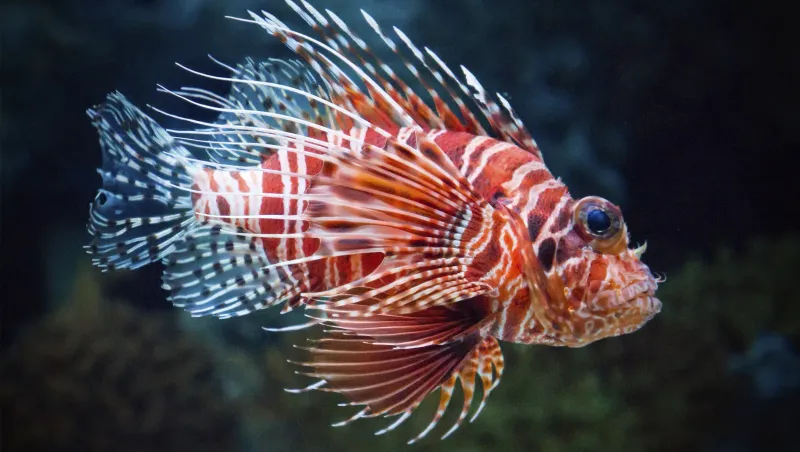
The Lionfish, with its striking striped patterns and flowing fins, resides in warm ocean waters. While a captivating sight, its spines carry venom that causes extreme pain and swelling.
Its invasive nature in some regions has led to ecological imbalances, prompting human intervention to control its spread. Divers admire its elegance but must exercise caution to avoid its spines. The Lionfish exemplifies how beauty in the ocean can mask dangerous traits, urging respect and awareness when exploring coral reefs. Its allure and threat coexist in a delicate balance.
Komodo Dragon
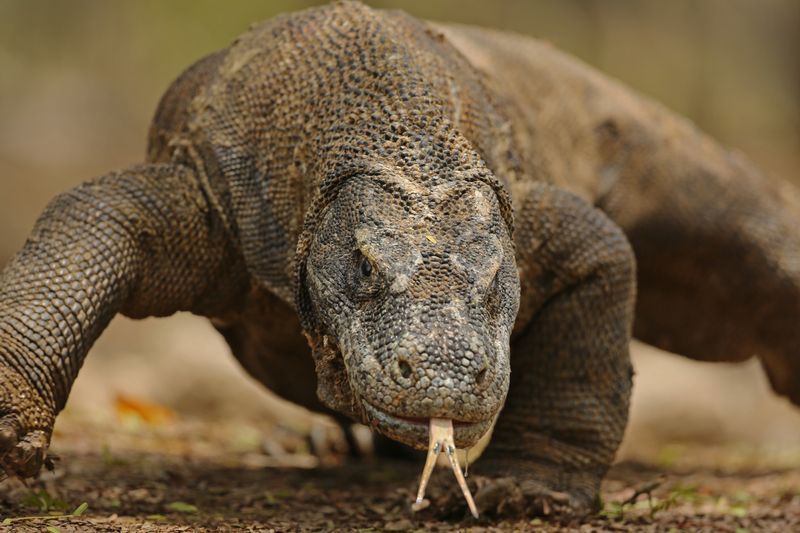
The Komodo Dragon, the largest living lizard, roams the Indonesian islands. Its prehistoric appearance is matched by its formidable hunting prowess, employing venomous saliva to subdue prey.
Despite their intimidating reputation, Komodo Dragons are a critical part of their ecosystem, controlling the population of other species. Visitors are drawn to their majestic presence but must maintain a safe distance, respecting their power and territory. This giant reptile embodies nature’s raw strength and beauty, offering a glimpse into a world where ancient creatures still thrive alongside modern life.
Sea Snake
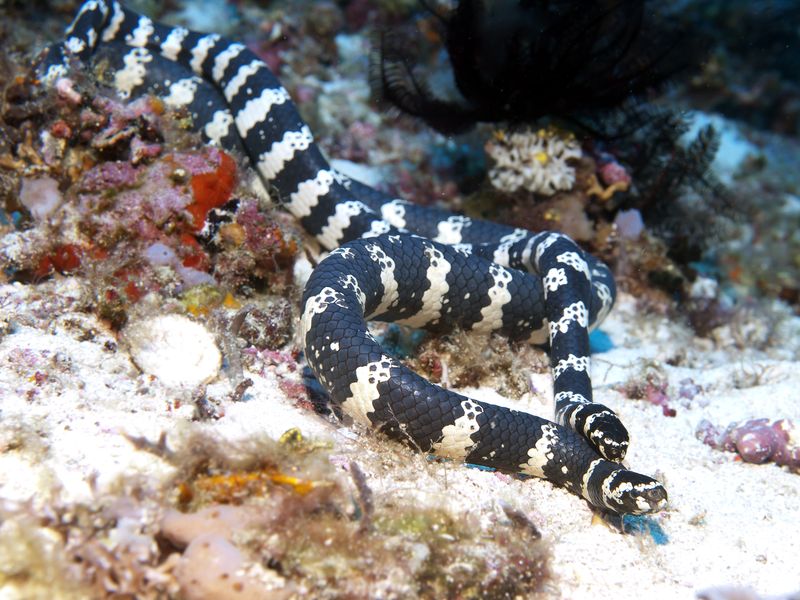
Sea Snakes, residing in the warm waters of the Indian and Pacific Oceans, are known for their striking patterns and potent venom. Their adaptations to aquatic life include paddle-like tails and the ability to breathe through their skin.
While generally not aggressive, their bites can be deadly if provoked. Snorkelers and divers are advised to admire from afar, respecting the snake’s space. Their unique beauty and lethal capabilities highlight the complex interplay of attraction and danger within marine life. Sea Snakes serve as a reminder of the ocean’s enigmatic depths.
Tsetse Fly
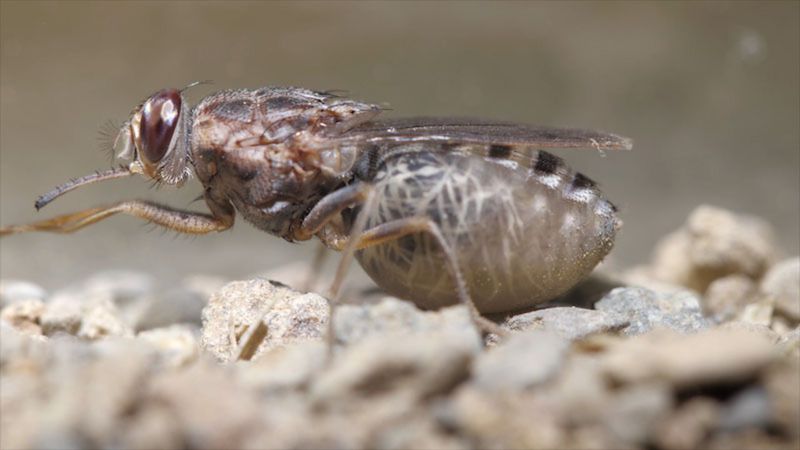
The Tsetse Fly, native to the African savannah, is a vector for sleeping sickness, a disease caused by parasites transmitted through its bite. Its drab appearance and small size belie its significant impact on human and animal health.
Control efforts focus on reducing fly populations and protecting vulnerable communities. The fly’s role in its ecosystem is complex, affecting both wildlife and human populations. Awareness and preventive measures are key to coexisting with this small yet impactful insect. The Tsetse Fly embodies the hidden dangers lurking in the natural world.
Cassowary
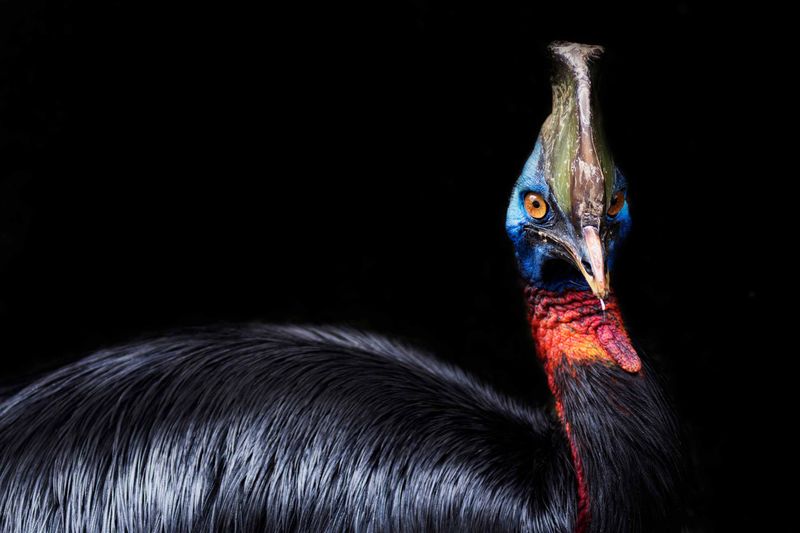
The Cassowary, a flightless bird native to the rainforests of New Guinea and Australia, is as striking as it is dangerous. Its vivid plumage and distinctive casque make it a visual marvel.
Despite its beauty, the Cassowary can be aggressive, using powerful legs and sharp claws to defend itself. Human encounters can be perilous, necessitating caution and respect. This bird’s dual nature as both a wonder and a threat reflects the complexity of wildlife interactions. The Cassowary reminds us to admire the wonders of nature with vigilance and understanding.
Fire Salamander
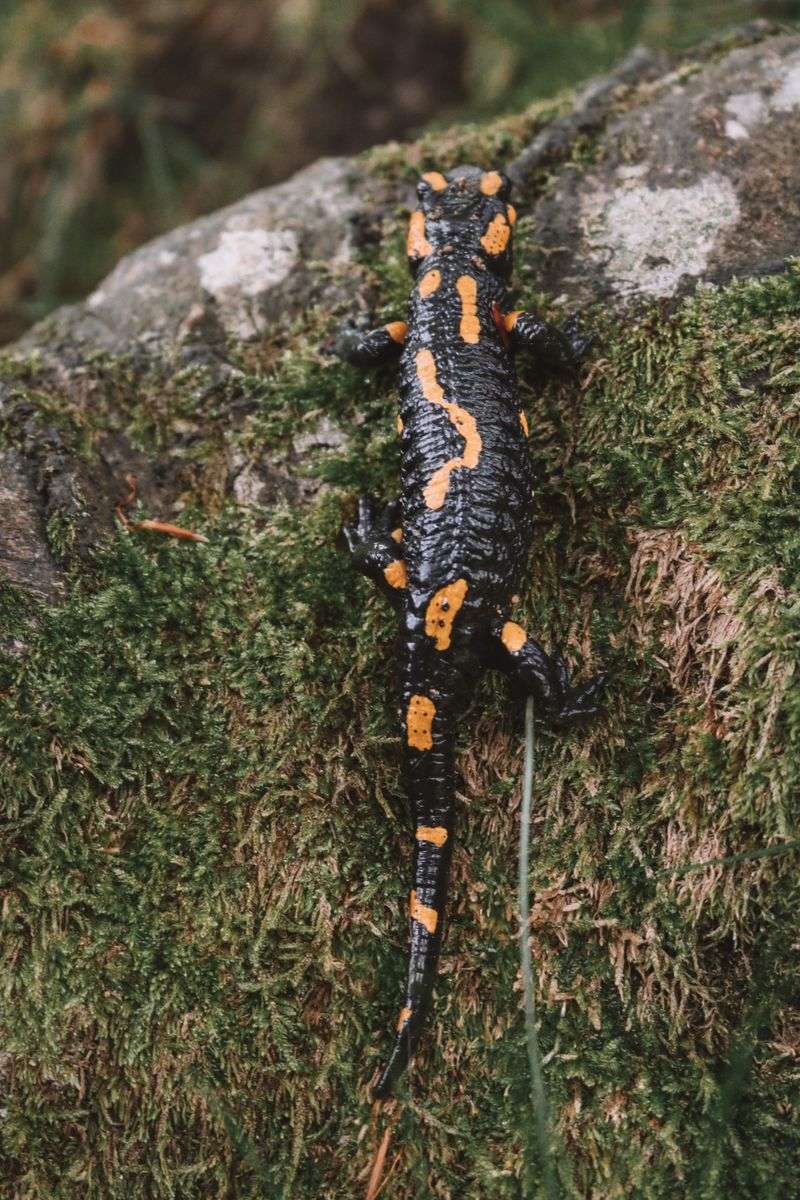
The Fire Salamander, found in European forests, captivates with its striking black and yellow coloration. This visual warning signals its toxic skin secretions, which can cause skin irritation and nausea if handled.
Despite its name, it prefers moist habitats and is often found in woodland streams. Its vibrant appearance and secretive nature add to its allure, though caution is advised when encountered. The Fire Salamander exemplifies how visual beauty in the animal kingdom often serves as a deterrent, signaling danger to potential predators and curious humans alike.
Platypus
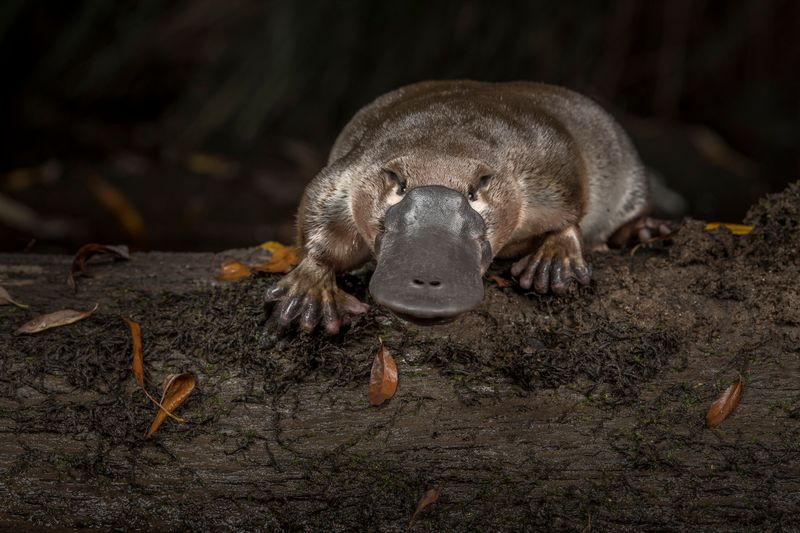
The Platypus, endemic to Eastern Australia, is an evolutionary curiosity with its duck-bill and webbed feet. Males possess venomous spurs on their hind legs, capable of delivering a painful sting.
While not lethal to humans, the venom causes significant discomfort, highlighting the Platypus’s unique defense mechanisms. This monotreme’s playful appearance and unusual features make it a beloved symbol of Australia’s diverse wildlife. Admiring its peculiarity requires understanding its natural behaviors and respecting its habitat. The Platypus embodies the wonder and unpredictability of evolutionary adaptation.
Black Widow Spider
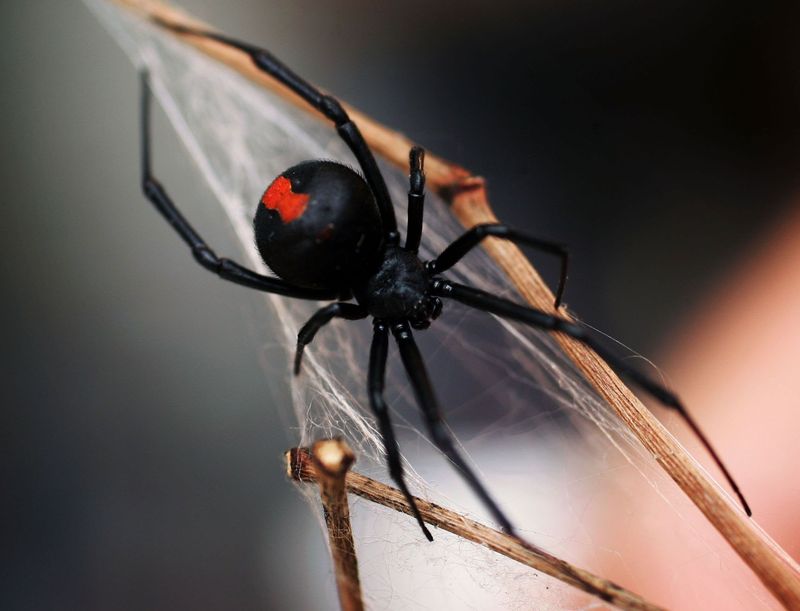
The Black Widow Spider, found across various continents, is notorious for its potent venom and distinctive appearance. Its glossy black body and red hourglass mark are both a warning and a signature trait.
Though shy by nature, its bite can cause severe symptoms, necessitating medical attention. These spiders play a role in controlling insect populations, contributing to ecological balance. Understanding their behavior and exercising caution in areas they inhabit can prevent unwanted encounters. The Black Widow’s menacing beauty is a reminder of the delicate balance between admiration and caution in nature.

